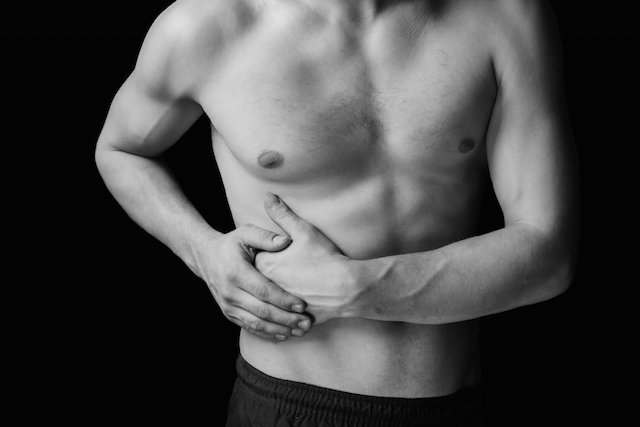Gallstones, also known as cholelithiasis, is a condition characterized by the formation of small, stone-like masses inside the gallbladder. The gallbladder is important for the storage of bile, a green liquid that helps with the digestion of fat.
Normally, bile flows through the biliary ducts from the gallbladder to the intestines to help breakdown fat. However, with the presence of increased bilirubin or cholesterol in the gallbladder, gallstones can form and obstruct the ducts. leading to gallbladder inflammation and pain.
Treatment for gallstones should be supervised by a gastroenterologist. Gallbladder stones can also be small enough to flow through the biliary ducts to the intestines, where they are then eliminated with stool, however surgery may be necessary to remove large, obstructive stones.

Common symptoms
Most times, gallstones do not cause any symptoms. Symptoms only really emerge when stones cause obstruction. The most common symptom of gallstones is biliary colic, which is a sudden and intense pain felt on the right side of the abdomen that emerges about 30 to 60 minutes after eating. It usually resolves once digestion is complete, as the gallbladder is no longer being stimulated to release bile.
If you suspect you have gallstones, report your symptoms below to assess your risk:
If you have any of the above-mentioned symptoms, you are advised to consult your family doctor or gastroenterologist. If your abdominal pain is constant or if you are also experiencing fever or vomiting, you should proceed immediately to the hospital.
Possible causes
Gallstones will usually form when the composition of bile changes. Composition can be influenced by the following factors:
- A diet rich in fat and simple carbohydrates, like white bread and soda
- Low fiber intake (e.g. decreased intake of whole wheat food, fruits and vegetables)
- Diabetes
- High cholesterol
- Sedentary lifestyle
- High blood pressure
- Cigarette use
- Prolonged use of birth control
- Family history of gallstones
Because women experience more fluctuations in hormones than men, they are more likely to develop gallstones.
How it’s diagnosed
Your family doctor or gastroenterologist will likely review your symptoms and assess whether you have risk factors for gallstones, like poor lifestyle habits and diet. The presence of gallstones can usually be confirmed with an ultrasound, however more specific imaging, like MRI or CT scan, can also assess the status of the gallbladder and surrounding organs.
Treatment options
Treatment for gallstones is usually guided by the doctor and is done based on the size of the gallbladder and presence of symptoms. In most cases, gallstones do not cause any symptoms and can be eliminated on their own through the stool without any intervention. Small stones can be dissolved using medication like ursodiol, however, when stones are large or cause obstruction in the biliary ducts, surgical procedures may be required.
One surgical procedure involves the use of shockwaves to dissolve the gallstones, similar to how kidney stones can also be dissolved. Otherwise, gallbladders that are severely inflamed and scarred can be surgically removed.
In addition, people with gallstones should avoid eating fatty foods and red meats, and they should participate in regular physical activity.
